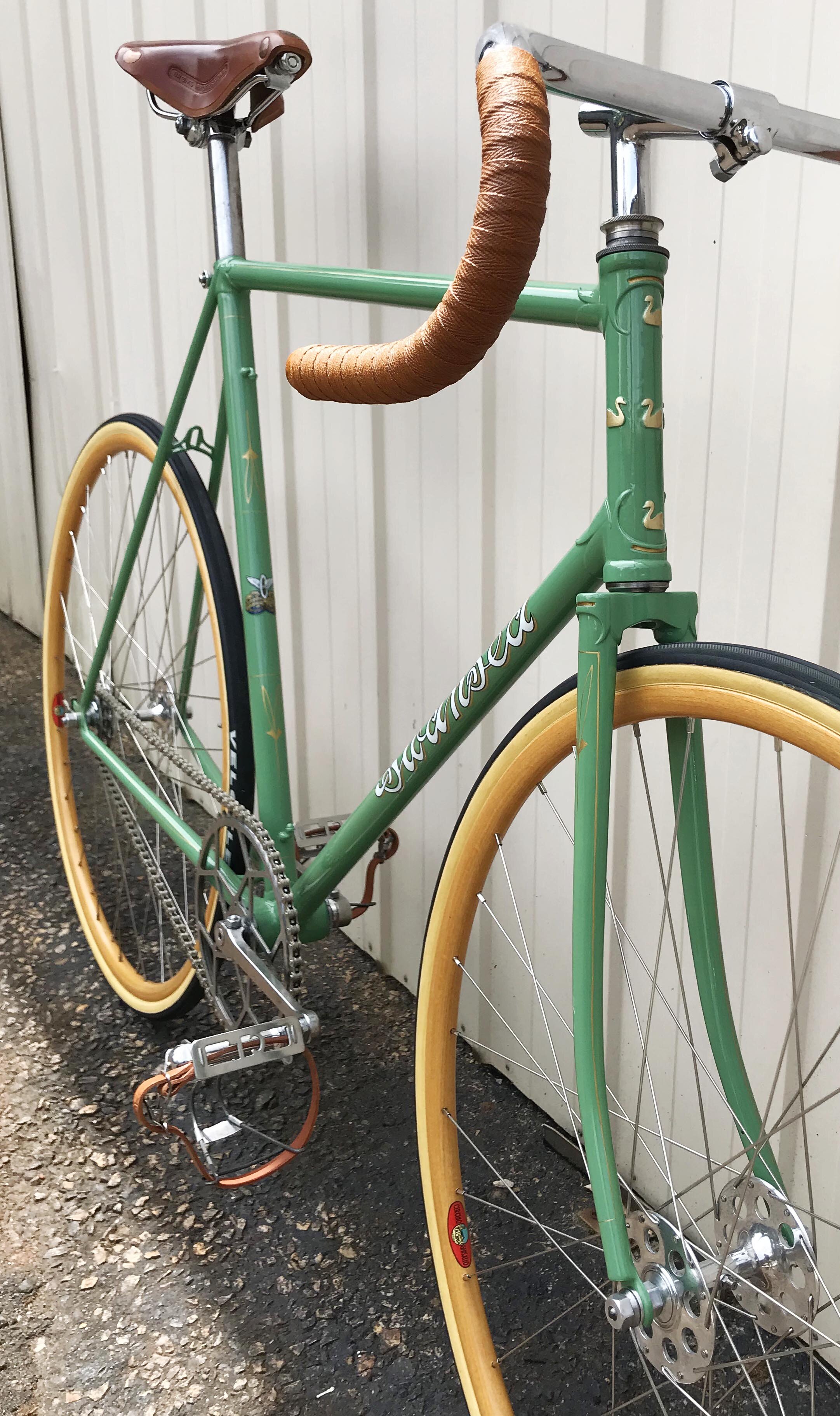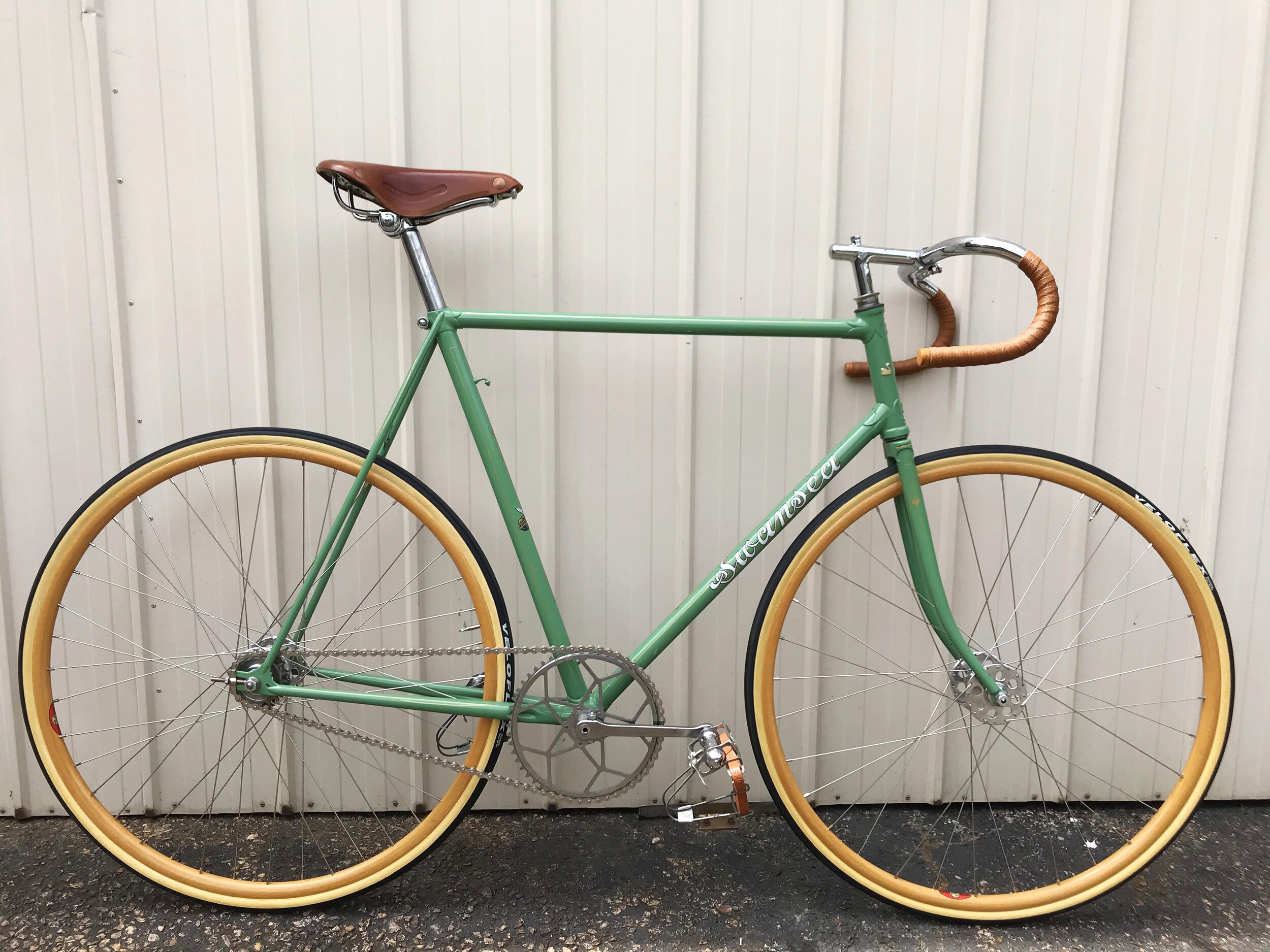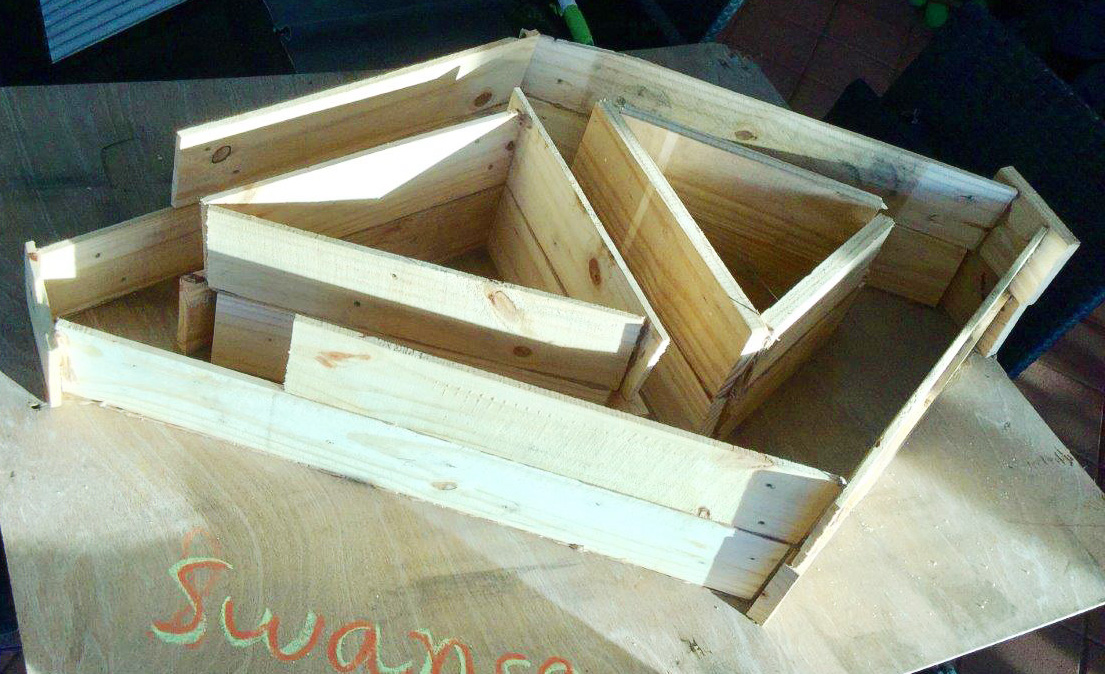Bicycle Restoration the Burra Way - Part One
Step One - Do Nothing
Bicycle collectors - we’re great doers. Part of what attracts us to bikes is the chance to fix and mend. The shed is our natural habitat, a comfortable nest of tools, tyres and tubes of various kinds. Curios of questionable taste rub shoulders with a frightening array of unguents, lineaments, acids, oils and waxes. When we’re not in the shed we gather in person or online to share our discoveries - from favoured rust removal solutions to the intricacies of cotter pin sizing.
Like the arrival of a baby the acquisition of a new old bike or frame is cause for celebration. But where the new child is swaddled, held, fed and fussed over our new bikes are dismantled, drenched in petrochemicals, subjected to the wire brush, scrubbed with vinegar, soaked in molasses, bead blasted, re-chromed and powder coated. And that’s just the start.
After a few years of frenetic vandalism the collector finally draws breath and asks “to what end?” It’s a great question and one that has been asked by students of history with increasing frequency over the past couple of centuries.
With just over 10 years in the club I’m pretty new to old bikes. While I’ve had the benefit of learning from club members and friends working in the museum and art collection world, it was a chance encounter with a South Australian bike enthusiast that got me interested in the Burra Charter, and its application to bike conservation and restoration.
Burra, population 900, is a South Australian town a couple of hours drive north of Adelaide. Copper deposits, for a short period in the 19th century, made it Australia’s biggest metals mine. A century later, in 1979, the heritage buildings inspired by the mine economy drew a group of architectural historians and heritage practitioners together for a conference that resulted in the Burra Charter, internationally the most significant set of guiding principles in heritage conservation of the modern age.
The Burra’s antecedents are the 1964 Venice Charter and the 1933 Athens Charter. The Burra is a set of principles and procedures associated with the conservation of Australian heritage places. So far, so architectural, so where do bikes fit in? I’ll answer that question with another question; why did we need a new heritage charter in the first place?
The Venice and Athens Charters were focussed on centuries old public monuments, palaces and parterre gardens. They had limited relevance to Australian heritage enthusiasts who were keen to preserve and celebrate modest, utilitarian buildings with much shorter histories.
A key feature of the Burra Charter is the acknowledgment and accomodation of the continued use of heritage buildings. This, to me, is what makes it so useful to collectors of old bikes.
Part of the joy of ownership of an old bike is in the riding of it. Bikes are made to be ridden; riding them is an expression of their purpose. Riding an old bike is an experience that engages our senses and feelings. It affords us a real opportunity to sense the past in a way that’s not available in museums which, after all, are mostly about looking and reading. I hope you will join me in saying the phrase ‘wall hanger’ has no place in our world. Anyway, back to the Burra Charter, which has at its heart the idea that mucking about with old stuff makes us better people.
“Heritage objects are worth keeping because they enrich our lives – by helping us understand the past, contributing to the richness of the present environment and because they will be of value to future generations.”
Another (edited) quote from the charter; I’ve substituted the word ‘place’ with ‘bike’.
“The Burra Charter advocates a cautious approach to change: do as much as necessary to care for the
placebike and to make it useable, but otherwise change it as little as possible so that its cultural significance is retained.”
My first step with a new old bike is to do nothing. Well nothing that involves tools and solvents anyway. I make sure the bike is out of the weather of course.
And then get the camera and notebook out.
The bike is documented as found. A couple of overall shots in good light against a plain a background, followed by closer shots of drivetrain, braking components and the saddle. The emphasis is documenting the condition of the bike and should include photos of things like the frame number, paint detailing and any unique design features.
Establishing and recording the provenance of the bike is next. Provenance is the chronology of the ownership, custody, location and use of a historical object. Tracing provenance provides evidence for original production and subsequent use. A bike can be a lens that focusses attention on specific aspects of history and culture. The more we know about a bike’s past, the more valuable it is to us.
It isn’t always easy to establish provenance, in fact sometimes it’s impossible. But establishing some history of your new acquisition will really help you make decisions about your next steps. That history could include photographs, recollections of previous owners, newspaper clippings, and of course whatever can be gleaned from the machine itself.
The Burra Charter Process puts collection and analysis of information ahead of making decisions and getting on the tools.
Download The Burra Charter and check out Part Two in this series.
Robert Frith







